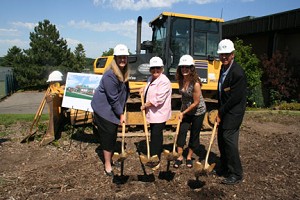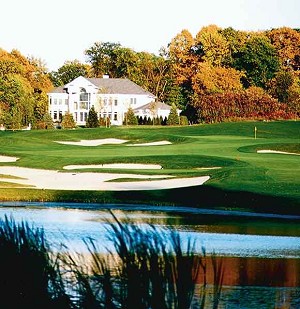Survival Of The Fittest (3 Of 7 In A Series) – A Decade Long Downswing On The Upswing; Minnesota Private Clubs, It’s A Good Time To Join
By Steve Dowling
Nearly all private golf club owners have been forced to re-examine their business models and make adjustments over the course of the last decade. That process often leads to deeply discounted membership fees, the addition of daily-fee play for non-members, and the postponement of planned improvement projects such as a course redesign or new clubhouse facility. Golf course owners have endured month after month of reduced patronage, forcing some to the financial brink and even bankruptcy. Others have scaled down operational costs, slashed membership fees or opened private fairways to public play.
Not surprisingly, such changes often do not sit well with members who bought in at or before the golf industry’s economic peak. The Florida-based National Golf Foundation has been studying public-play golf courses and private, members-only clubs over the past decade. Recent studies show a number of discouraging trends:
Members-Only Clubs
• On average, private-club membership was down 13 percent from each clubs respective peak year, and the number of rounds played was down 17 percent.
• About 29 percent of private clubs said they were operating at a financial loss.
• From 1999 to 2010, 45 private golf clubs closed, and 399 converted to public-play facilities
• Approximately 60 percent said they were forced to cut back on maintenance, and 90 percent said they had to postpone capital improvements or repairs.
Initiation Fees Down
Fewer people have enrolled in private clubs during the past few years as the economy put a squeeze on consumer purchases, especially those luxury items like vacations, new cars and club memberships. Minnesota golf and country clubs, primarily in the greater Twin Cities area, have slashed or even eliminated their initiation fees over recent years to attract new members. Many clubs are sacrificing up-front fees in exchange for a steady stream of monthly dues – revenues needed to cover the club’s overhead, operating expenses and maintain the high level of service that members have come to expect. The promotions are working. Some clubs have added dozens of new members in 2010 and 2011, despite the lingering recession and continued pressure from less-expensive public courses.
As examples, Bracketts Crossing Country Club in Lakeville, Dellwood Hills Golf Club near White Bear Lake, Burl Oaks Golf Club in Minnestrista, Windsong Farm Golf Club in Independence and Bearpath Golf & Country Club in Eden Prairie added large numbers of members in the past few months, thanks largely to low to even zero initiation fee offers. Looking forward, club officials say they expect initiation fees to rebound in the coming years as the economy improves, although they may never reach their previous highs of 5-10 years ago.
Not all private clubs are running promotions, though. Interlachen Country Club apparently hasn’t backed off on their near $100,000 initiation fee nor has Hazeltine National Golf Club in Chaska abandoned its $40,000+ initiation fee although it is now offering a deferred membership where new members can spread the initiation fee over four years.
Golf courses really run on their individual member dues averaging $300 to $800 per month for 12 months per year. These private clubs have operating budgets based on memberships of 300-400 dues payers. Clubs need members spending money in the restaurants and incremental spending in the golf shop to survive.
The Minnesota Golf Association, through Tom Ryan, Executive Director and Chief Operating Officer indicates the outlook for Minnesota golf and country clubs is better than that for member-only clubs in many other states due to the low percentage of private clubs at 10 percent of all courses in Minnesota compared to an average of 25 percent nationwide, therefore memberships are a scarcer commodity. Also, despite the downturn in the economy the number of golf rounds played in Minnesota has actually risen since 2002 compared to a national decline of 4.1 percent. “The economy obviously has hurt private clubs a bit, but we don’t have the issues they’re having in other parts of the country, where demand is such that there are actually private clubs that are closing and being plowed under. That’s just not going to happen here,” said Ryan. Still, the days of high initiation fees may be over.
The Old And The New
The fundamentals of private golf clubs and country clubs have changed. It used to be that belonging to a private club was the pinnacle of achievement. If you made moved to the corner office, were designated a partner or were promoted to vice president, joining “the club” was a perk. In small or medium-size cities, club dining was often the best in town, the spa was the only one around and there were no premium daily-fee golf options. That model still holds for particular clubs in particular places for particular people, like well-off retirees. But for the younger generation of club members, things are different. Neither spouse in a two-income family with children has the time or inclination to while away weekends at the club. The club used to be the focal point of social life for members, but now it’s just one among many other activities they are involved with.
Well-run clubs with the proper mix of programs for their community are still solid. Private clubs need to keep up with the times. Instead of wringing its hands about younger members who want to spend more time with their kids, the progressive clubs are finding ways to become more central to family life. The junior golf programs are gaining great popularity.
Private clubs are experiencing two big-picture trends: changing demographics and the economy. For prospective members under age 45, the cachet of belonging to a club doesn’t mean much. For them the deal has to make sense financially and fit into their lifestyle. Club governors and boards are more often advocating building a fitness facility, expanding the number of corporate outings and outside social functions, or creating new membership categories such as for weekday-only play. At clubs whose governance is dominated by members in their 60s and 70s, complacency may be at fault. They like things the way they are, and perhaps calculate that in five years or so, they won’t have as much need for a golf club anyway. Sometimes clubs, even prestigious ones, compromise by allowing new members to pay their initiation fees over time, or to pay only dues for one year and then come up with their initiations. Cutting budgets by 20% to 30% is sometimes necessary and possible, but can also be disruptive. For clubs unable to adapt in their current form, the next step is often allowing paid play by outsiders at off-hours, that is, becoming semi-public or semi-private.
Taking A Gamble
To remain competitive and advance to a leadership position private clubs must remain cognizant of changes in economic condition and consumer confidence and plan for the future by adjustments to the changing attitudes of current and potential members. While it is necessary to cut costs, clubs should maintain the level of services the members expect and sustain attractive settings for club activities. Social habits are changing as people have less leisure time than in the past. Activities geared for younger members and families are important to draw members to the club on a day-to-day basis while programming for the boomers – most clubs’ base.
Most clubs continue to offer products, beyond those golf related activities, such as dining, banquets/weddings, expanded membership options (Social Memberships, Dining Membership, etc.). While the golf component gets plenty of attention, it is these ancillary products that offer broader economic opportunities. In some situations the profit margin for banquets/weddings, as an example, can be consistently in the 60%-70% range.
With all the above said, Owner Tom Smith and General Manager Steve Allen at Bracketts Crossing Country Club in Lakeville have made bold strides by investing heavily in expanding the physical plant at Bracketts. The very first move was a significant gamble, in the millions of dollars, with a complete remodel and major expansion of the clubhouse and banquet facility just over a year ago highlighted by the capability of accommodating 600 for a banquet/wedding – a huge expense yet with no member assessments!
Smith and Allen knew they had a good product and a great community and they needed to match their offerings with the advancing needs and preferences of today’s members and potential members. With the changing family climate the club focused on developing a balanced family oriented product with pool, tennis, golf and food and beverage. In the process they found that more and more families were traveling less to the “cabin” (even selling the cabin) in favor of using the club for seasonal recreation.
Bracketts Crossing Country Club then combined the clubhouse investment with a revamping of membership programs, initiation fee incentives, a strong commitment to quality customer service, plans for constant improvements of course conditions and facilities improvements, expansion of banquet services to include off-site catering along with tactfully creative marketing maneuvers. The outcome can only be described as an Ivy League Graduate School quality case study as how to successfully navigate the hazards of members-only golf in a tough, but recovering economy. The results of their gamble is a full Golf Membership, a well-populated Social Membership, flexible Dining Membership, increased rounds of members and family (projected at 29,000-30,000 rounds for 2011), active tournament and outing schedule, busy banquet calendar (70+ weddings on the books for 2011), and a bright future. The well calculated gamble is being recognized as a solid business model which is likely to be adopted by other clubs.
It’s A Good Time To Join
With more private clubs making the competitive adjustments to fees, especially initiation fees, and delivering the “experience” that best fits the changing trends dictated by today’s demographics and economics it is a prime time for those golfers (and non-golfers) to capture the value being offered by members-only private golf clubs. Clubs are very open to comparative shopping by prospective members – check out the value of a private club before the business cycle governed by supply and demand changes.


